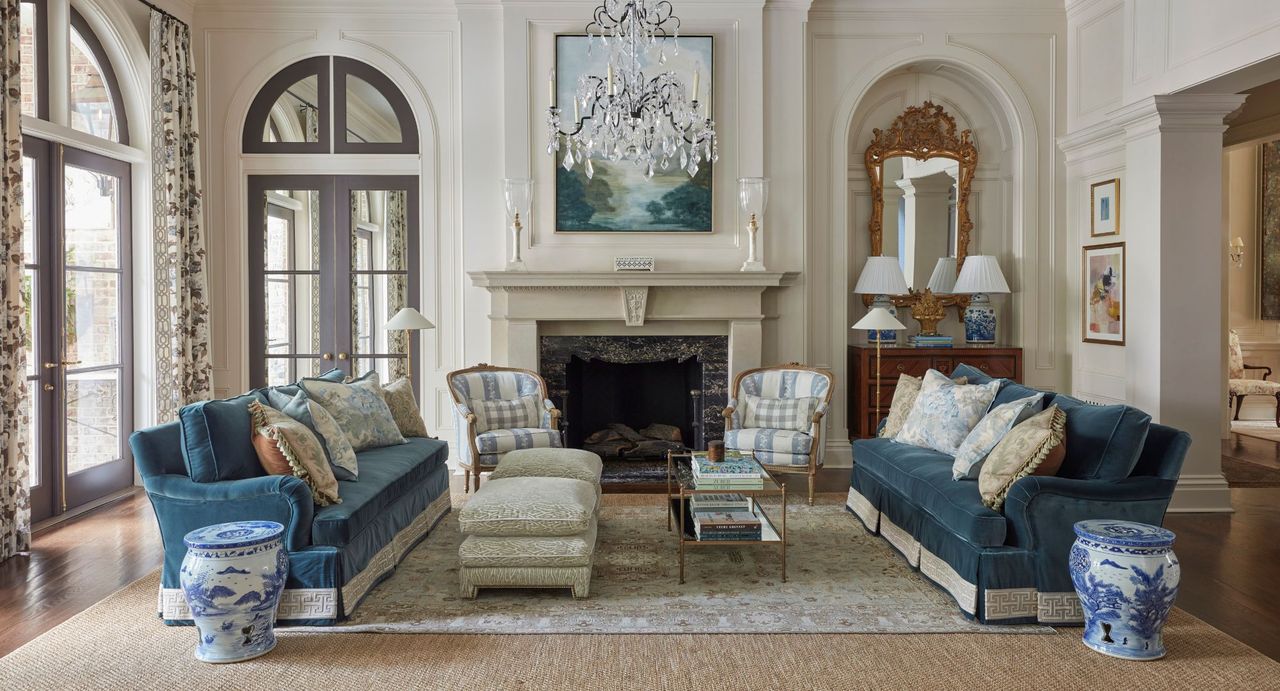
To layer rugs? Or not to layer rugs? As an interiors lover, these are often the sorts of questions that race through my mind at night. The thing is, I believe that one rug has the power to tie a whole room together (and, when picked well, I stand by the fact that it can). But after hearing what interior designers had to say on the matter, I’m not afraid to admit that I’ll eat my words — because in 2025, rug layering is most definitely in.
“Rugs are one of the most transformative tools in decorating, and layering them is such a clever way to bring even more personality and depth into a room, giving that real lived-in look,” explains Oka co-founder Sue Jones. “It’s not a new idea, of course, if you look back, people have been layering rugs for years, for warmth, comfort, or as a way of showing craftsmanship and culture," she adds. "But over time, it’s evolved into a decorating choice that we keep returning to. I think that’s because it’s both practical and characterful and allows you to play with texture, pattern, and proportion.”
And I wholeheartedly agree. Knowing where to buy rugs and staying on top of the latest rug trends is always a great place to start. So, consider this your expert-backed guide on how to layer rugs the interior designer way.
The Art of Layering Rugs in the Home
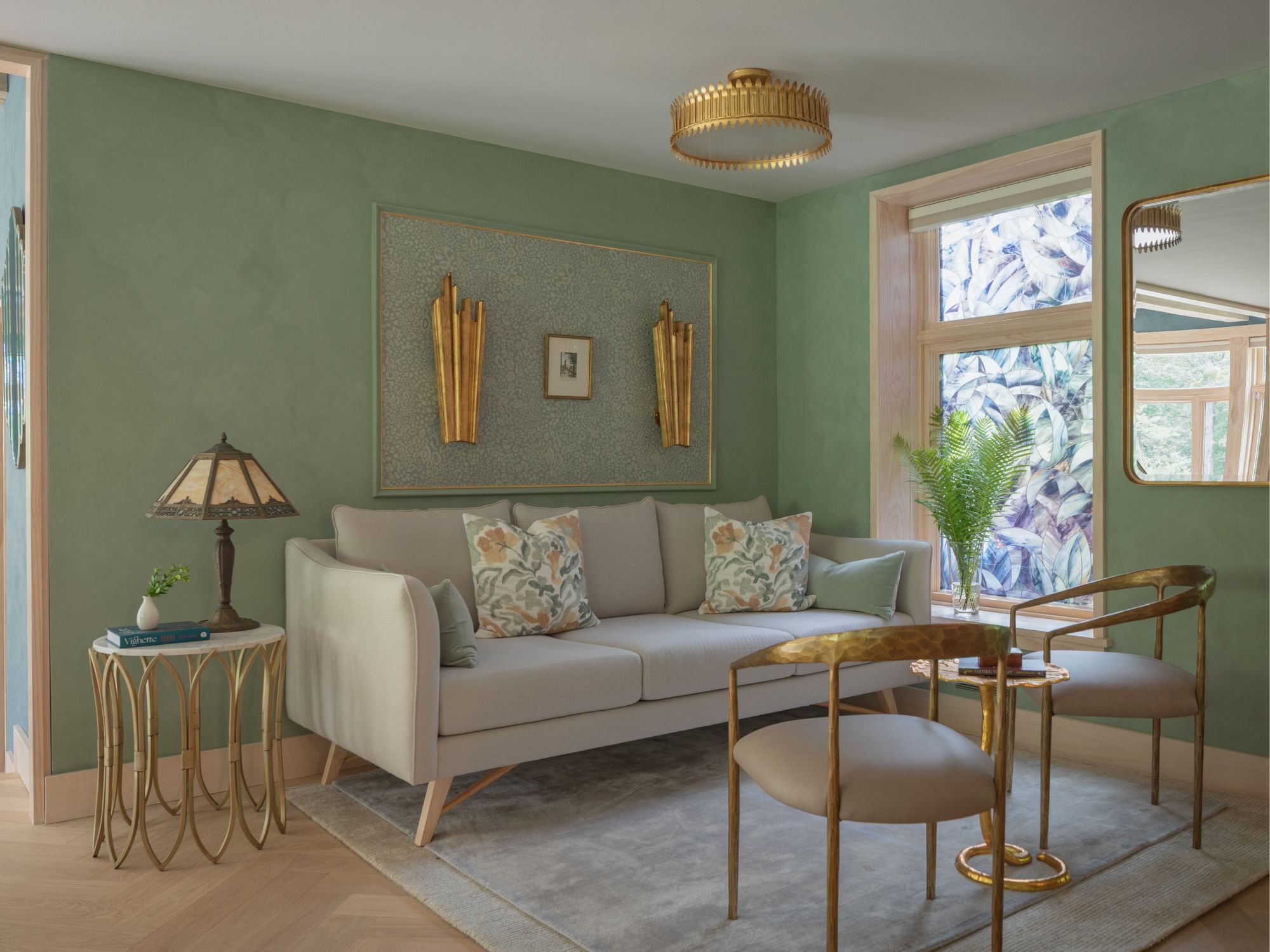
As its name suggests, rug layering is the art of placing multiple rugs on top of each other to add warmth, visual interest, and a sense of comfort.
“I love the idea of layering rugs — it’s such an easy way to bring personality and depth into a room,” Malin Glemme, founder and creative director of LAYERED, explains.
But where did this not-so-new interior trend come from? “Layering has its roots in more traditional interiors, where you would often layer smaller, handmade rugs over larger floor coverings for warmth and protection,” Malin explains.
According to the designer, doing so enables you to combine textures — like a flatweave rug as the base with a soft, high-pile rug on top — for a tactile experience that feels 'elevated'. "It’s also a clever way to create ‘rooms within a room’, helping to define seating areas or dining zones, and making large spaces feel more intimate and considered,” she adds.
Therefore, today, rug layering not only serves a functional purpose, but it can also be used as a fun design tool to add instant character and originality to a space.
According to the latest trends, there's a growing pull towards quiet patterns — so this earthy-toned design, with its simple geometric lines, is ticking all the boxes.
Jute is back and in a big way and this classic rectangular rug is the perfect match for bigger spaces. Woven by hand, use this as the base layer to any canvas.
40% jute, 40% wool, and 20% cotton, this patterned rug features a geometric print of stripes and diamonds all neatly encased within a red border and fringing. We love.
How to Layer Rugs in a Modern Home
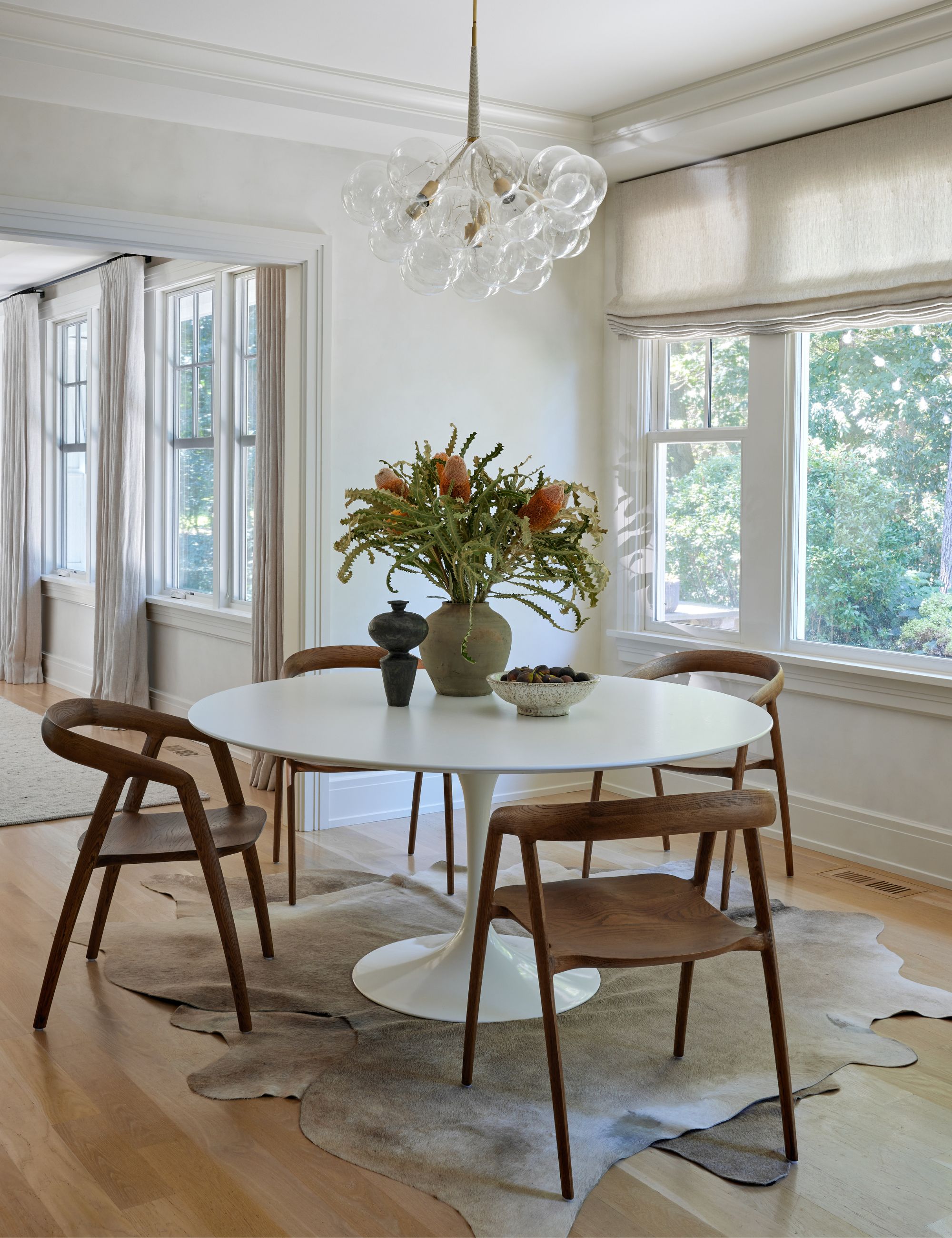
Mastering a design trend isn’t always easy. But when it comes to rug layering, Sue Jones, the co-founder of OKA, says there’s no single right way to do it. Instead, she says it’s all about understanding the look and feel you are trying to create.
“A neat, centered stack feels polished and often a touch more formal, while overlapping rugs off-center introduces a more relaxed aesthetic,” she explains. “I find layering rugs works wonderfully in spaces where you want to add warmth, softness, or extra dimension,” Sue adds.
So, to help the rug placement feel intentional rather than haphazard, keep in mind the proportion and balance. “As a guide, I’d suggest the bottom rug be at least a third larger so the layering feels deliberate and well-framed, and I tend not to go beyond two or three rugs, as any more can quickly overwhelm a space," Sue says.
Whether you’re choosing between colorful or graphic designs, you also need to ensure the colors and patterns are aligned so they complement one another, rather than compete. For Sarah Tract, the founder and interior designer behind Sarah Tract Interiors, failing to do so risks creating a cluttered look.
Her advice? “Start with a grounded, neutral base. Then, choose a smaller statement rug for the top. And be sure to match the colors and patterns to your other decor.” Once you’re happy with your chosen rugs, don’t forget to secure the rugs with a non-slip pad (like this one from John Lewis that comes in multiple sizes).
The Right Type of Rug for Layering
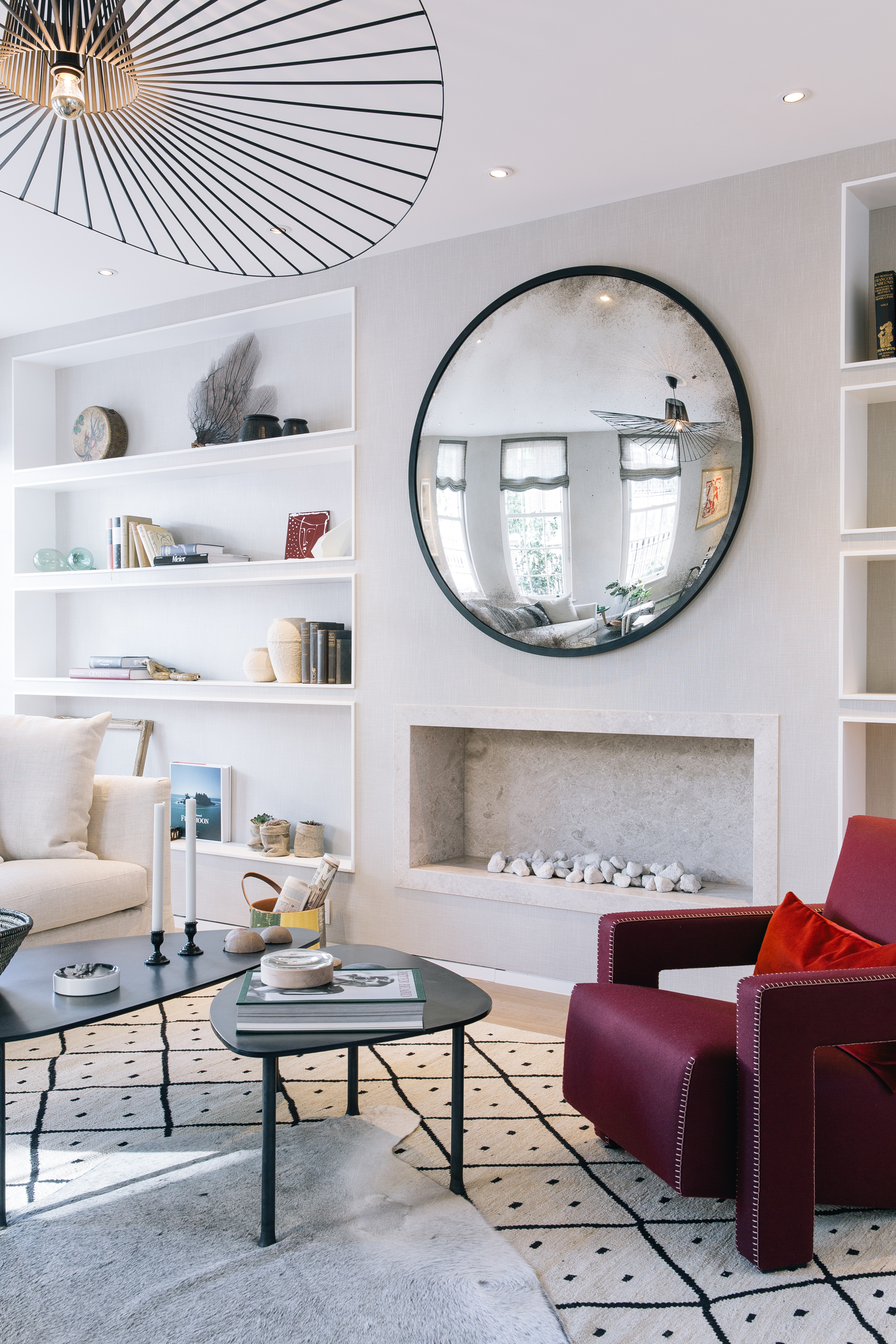
But it's not just the rug color and pattern you need to give some serious thought to.
Picking out the right style of rug will also help you nail this trend with ease. “I love combining a large, neutral base rug — like a flatweave — with something more tactile and textured on top, such as a shaggy rug or a wool rug with rya details,” Malin says.
And Jen Baxter, founder and designer at Baxter Hill Interiors, agrees, noting: “A large natural fiber base (like a jute, sisal, or hemp) with a smaller patterned wool or vintage rug layered on top is timeless. While flatweaves under plush or tufted rugs add dimension and tactile interest.”
Techniques For Layering Rugs
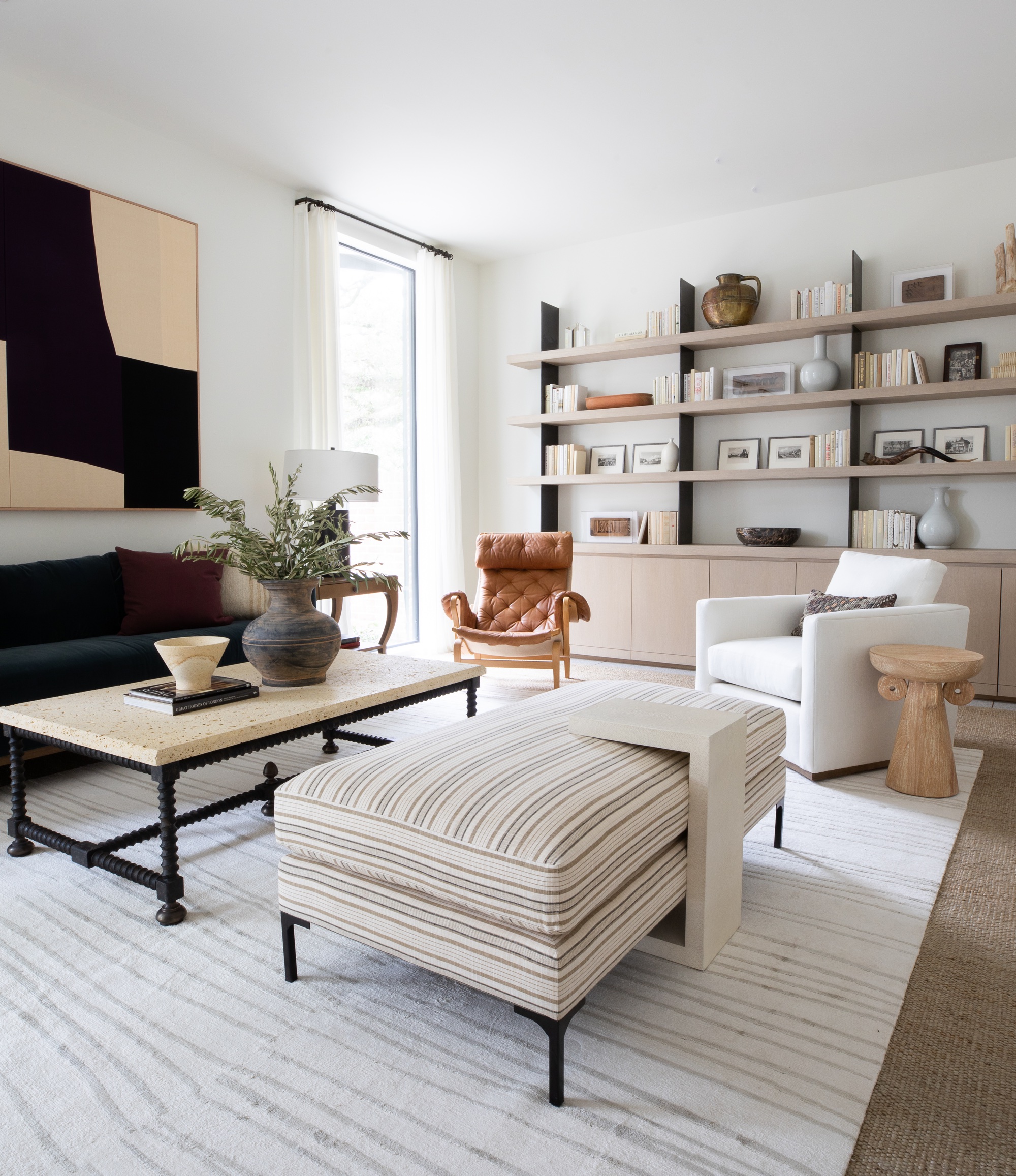
There are many techniques to make layering your rugs look purposeful. This includes:
- Aligned: Stacking a smaller rug on top of a larger one is perhaps one of the simplest ways to try out this trend. This is interior designer Jen’s favorite way of rug layering, as she says it allows for a 'beloved heirloom rug' to be framed by a quieter foundation. “This gives it pride of place," she adds.
- Off-center: Placing your top rug slightly off-centre can help you recreate a more relaxed and collected feel. “Personally, I prefer it when it looks a little effortless, as though it has evolved naturally over time rather than being too deliberately arranged,” Malin says.
- Angling the top rug diagonally: This can help you cover more floor space while elongating a room.
- Mix and matching shapes: This idea’s great if you’re looking to add visual interest by adding depth and dimension.
FAQs
What Is the Rule for Layering Rugs?
If you're keen to tap into this trend, interior designer Jen recommends always starting with a larger, grounding rug. “Then use the smaller, more expressive rug as the highlight," she says. "Think of it like art: the base is your canvas, the top rug is your focal point."
If you're layering rugs in a busy and high-traffic space, you should also make sure the arrangement works for daily life. "Style shouldn’t create hazards," adds Jen.
Now that you've got the bottom of rug layering, you might be wondering: should you put a rug on a carpet? If that's the case, we spoke to interior designers to find out the dos and don'ts of this layering technique.







